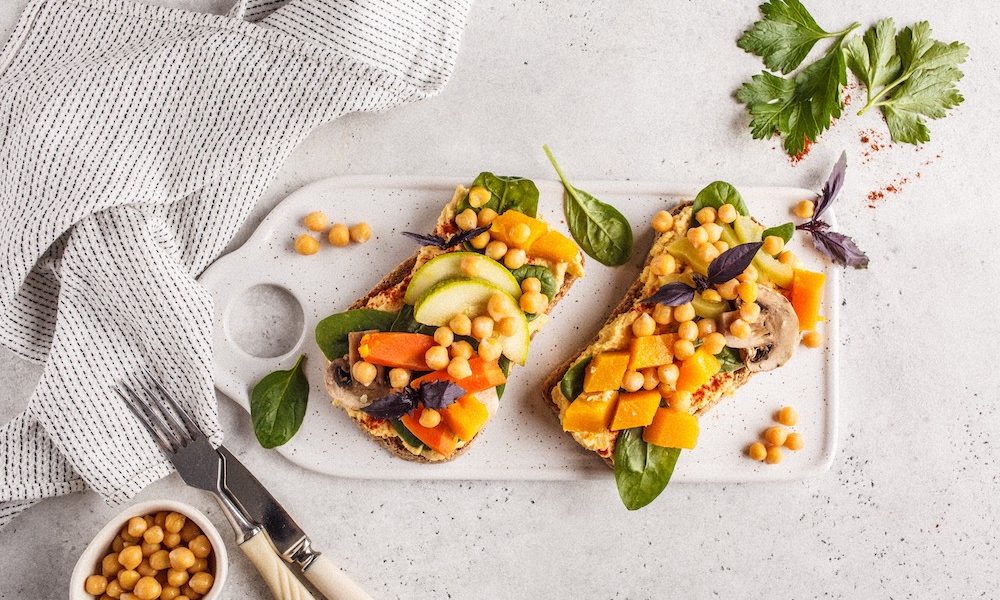Are you thinking about going plant-based, but are unsure of the consequences on athletic performance? Get started with these simple tips to fuel up and stay in top form.
BY: TAYLOR WOLFRAM, MS, RDN, LDN
In recent years, plant-based diets have been gaining more attention as people are decreasing or ditching animal foods for ethical, environmental, or health reasons.
If you’re an athlete, you may have wondered how eating plant-based may impact your physical performance. And while eating plant-based does take a little extra planning, all athletes need to be mindful about how they feed their bodies before, during, and after an event or tough training session.
Whether you’re simply eating more plant foods or going vegan, there is plenty of research to support plant-based eating for optimal athletic performance. According to the Vegetarian Nutrition Dietetic Practice Group of the Academy of Nutrition and Dietetics, “Vegetarian diets are linked to decreased risk for chronic diseases including cardiovascular disease, type 2 diabetes, and certain cancers, while their naturally high carbohydrate and phytochemical content may help athletes optimize their training, performance, and recovery.”
In other words, you’re more likely to experience benefits from this style of eating than disadvantages. As long as you’re meeting your fueling needs and eating satisfying foods, a plant-based eating style can support your sports performance and your overall health.
So how can you start? Here are a few tips to make sure you get the nutrients you need as an athlete.
1. LOVE THOSE CARBS.
No matter your eating style, carbohydrates are key for fueling workouts. You’re probably familiar with carb-rich plant-based foods including grains, potatoes, and fruit – clearly, it’s not tough to get enough carbs while eating plant-based! Also, keep in mind that the fiber in plant foods can often fill you up too fast, so remember that it’s OK to eat some refined grains such as white pasta and white rice.
2. PROTEIN VARIETY IS THE WAY TO GO.
Many of us have been trained to believe that we need protein from meat, dairy, and eggs to maintain strong muscles and bones. In actuality, plant foods can provide all the amino acids and protein we need; just be sure to eat a variety of different plant-based foods every day to cover your needs.
Protein-rich plant foods include beans, lentils, nuts and soyfoods such as tofu and tempeh. Bonus: these foods tend to be way more affordable than animal-based protein foods! Protein bars or powders can also be a great way to get an extra boost during heavy training periods.
3. MEET YOUR ENERGY NEEDS
Another concern about plant-based eating as an athlete may be getting enough calories. While it’s true that vegetables are lower in calories, there are calorie-dense foods in the plant kingdom including nuts, seeds, avocados, and olives. Eating regular meals and snacks is key to getting enough calories for all athletes.
Beyond the calories and macronutrients (carbs, protein, fat), athletes also need to be mindful of certain micronutrients (vitamins and minerals), especially iron. Keep in mind that women need more iron than men so this is a nutrient that females of child-bearing age (or anyone who menstruates) need to be mindful of. Be sure to take incorporate plant foods with iron along with vitamin C-containing foods to help increase its absorption.
4. START WITH SMALL STEPS.
If you’re just getting started, think substitution rather than elimination. Start by substituting meat with tofu, tempeh, beans, and lentils. Substitute dairy-based milk, cheese, and yogurt with fortified plant-based versions of these foods. Work towards eating a wide variety of colorful vegetables and fruits by adding at least two different colors of produce to every meal. Colors in vegetables and fruits represent different nutrients which are crucial for fueling and recovery.
In addition to the foods you’re substituting, don’t forget to also focus on foods to add to your meals. Try adding baked tofu to pasta for a protein boost of an otherwise carb-centric meal. Consider legume-based pasta for a higher protein boost, or add peanut butter to smoothies for more protein, fat, and calories. Avocado in salads and wraps is another great way to add fat, calories and deliciousness to plant-based meals.
Most importantly, remember that going plant-based doesn’t mean you need to start overly restricting certain foods.
Experiment, have fun with it, and be energized to do more of what you love!
Adapted from the original post.
HEADER IMAGE: NINA FIRSOVA
Taylor Wolfram, MS, RDN, LDN is a Chicago-based Registered Dietitian who helps others lead a life of compassion that improves their overall relationship with food, exercise, and their bodies. As an expert in eco-ethical and vegan lifestyles, she’s passionate about helping individuals end their struggle with food and live an unrestricted life in the kitchen.

